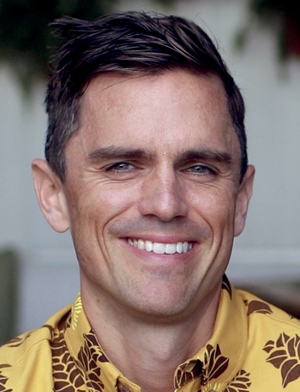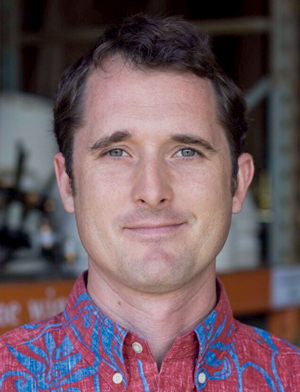As Hawai‘i government officials grapple with the challenge of limited landfill space statewide, federal restrictions set in place by the Environmental Protection Agency are ruling out possible locations that were once considered for new landfills.
Hawaii Act 73 states landfills must be located at least half a mile from residential areas; are prohibited from being located in areas with heavy rain and steep slopes, as well as agricultural and/or conservation lands; above aquifers; 300 feet beyond streams; and 1,000 feet beyond the ocean.
New landfills are also now prohibited from being created in tsunami inundation zones, 100-year flood zones and wetlands. There are also concerns that landfills near airports will attract birds, resulting in damage to aircraft and fatalities among pilots and passengers.
The City & County of Honolulu is in the process of identifying its next landfill and it doesn’t want one any bigger or more active than absolutely necessary.

Michael O’Keefe
“It’s very important that there is less [construction and demolition] waste. It’s also important that we reuse, recycle, repurpose and start building with sustainable products,” says Michael O’Keefe, deputy director of Honolulu’s Department of Environmental Services (ENV). “The [Blangiardi] administration has made it clear that the next landfill is not going to be on the west side.”
For construction and demolition (C&D) waste, companies are under pressure to reuse, recycle and repurpose materials. If not, C&D is taken to PVT Land Company Ltd., a privately owned landfill in Nanakuli, which is expected to close in three to eight years.
PVT is on Lualualei Naval Road, about a quarter of a mile northeast from Farrington Highway. It occupies 400 acres, with only a portion of the land used for landfill operations at any given time. The PVT landfill is located more than half a mile from residential areas and features a required 750-foot landscaped buffer that helps manage dust.
In 2021, a landfill advisory committee (LAC) visited PVT, Waimanalo Gulch and H-Power for educational tours and presentations. Long-time employee Albert Shigemura, president of PVT, told the LAC that there was a time when as many as 90 employees worked at the landfill. Since its recycling operations were dismantled a few years ago, there are now 30-plus employees for its landfill operations, where only non-hazardous materials from C&D sites such as wood, metal, plastic, concrete, asphalt, glass, masonry, rock, dirt, boulders and siding are accepted.
PVT currently refuses auto parts, tires, solvents, paper waste, PCBs, explosives, radioactive materials, known carcinogens and other hazardous materials.
“That landfill is filling up and there’s really no plan to have another C&D-only landfill,” says O’Keefe. “Because of that, the city will have to step in and take care of the responsibility to take in C&D material when PVT shuts down.”

Quinn Vittum
Quinn Vittum, executive director of Re-use Hawai‘i and a member of the Source Reduction Working Group for the city, says not only is PVT going to close, but Waimanalo Gulch in Kapolei is scheduled to close in 2028.
“The landfill criteria is a challenging situation. It is one of those things the building industry and broader community need to know about,” Vittum says. “We are at a crossroads and need to innovate waste reduction.”
NO WRECKING BALLS
Vittum says that with more frequency, construction companies are calling on Re-use Hawai‘i and other demolition and repurposing companies when it comes to demolition projects.
Rather than swinging a wrecking ball, work is now done more carefully, sometimes taking weeks to break down a house room-by-room; or dislodging beautiful wood and intricately detailed trim and fixtures that still have life in them.
“It is a great group of [general contractors] who loop us in their projects when they have a demo. Some are folks under the radar, but there’s also Armstrong, Merrill and Dowbuilt from Seattle here doing high-end stuff,” Vittum says.
On the other side of the equation, Re-use Hawai‘i welcomes “do-it-yourself homeowners just trying to get cool material and save money, smaller contractors, movie set designers, [television show producers] looking for stuff to blow up, artists and rental property owners,” Vittum says.
Re-use Hawai‘i also has a new program to mill logs. Norfolk pine, mango and monkeypod are all milled into two-inch slabs that are in high demand.
“Where do you find two-inch-thick tropical hardwood? There are other millers in town, and we try to take stuff they wouldn’t take, potential waste,” Vittum says.
OTHER LANDFILLS
Outside O‘ahu, the South Hilo Sanitary Landfill closed in 2020, leaving the only active landfill on the Big Island — which is expected to remain open for less than 10 more years — at Pu‘uanahulu.
After protests about a decision made to use the closed Olowalu landfill site for Lāhainā fire debris, Central Maui Landfill in Pu‘unēnē was set to open March 1.
And with Kaua‘i’s Kekaha Landfill set to close in 2027, a new Kekaha Mauka site, near a potential wetland, is expected to be in operation for more than 260 years.
But the new site is also close to Lihue Airport — and the Hawaii Department of Transportation’s Airports Division is opposed because of potential interference from birds. The landfill’s location remains open for discussion.




